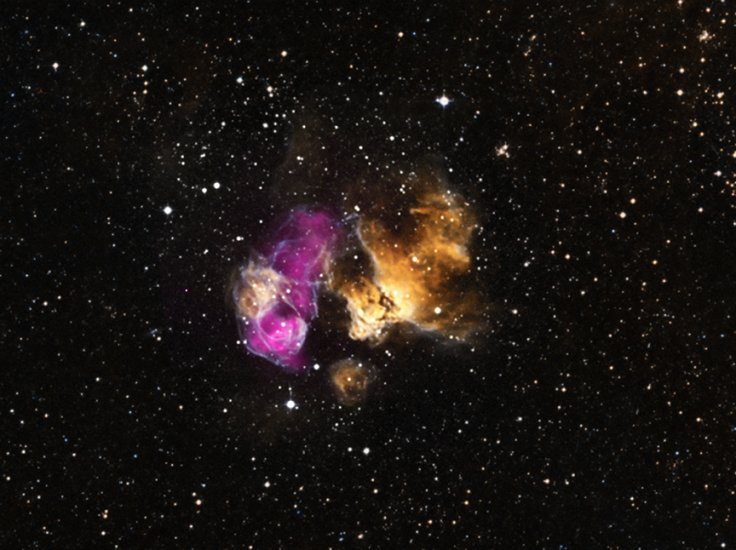A photo previously captured by NASA shows the remains of a supernova event that was caused by a star that was more massive than the Sun. The photo also features a star that was able to survive its neighbor's stellar explosion.
The cosmic object featured in the image is the supernova remnant known as DEM L241, which is located within Milky Way's neighbor, the Large Magellanic Cloud. It was captured by NASA's Chandra X-ray Telescope.

DEM L241's Supernova
As explained by the agency, DEM L241 was created by a star that was about 25 to 40 times more massive than the Sun. Shortly after the massive star ran out of fuel, it collapsed under the weight of its own gravity.
Its death triggered a powerful supernova explosion. Within the supernova remnant is a neutron star, which is the highly-dense core of the stellar object that collapsed. The neutron star could also be a black hole that was formed following the star's death.
Survivor of The Supernova
While studying the image, NASA noticed another star within DEM L241. According to the agency, the star is a neighboring stellar object that was able to survive the blast. It is currently located within the debris field of the supernova. As noted by NASA, the presence of the surviving star indicates that DEM L241 used to be a binary system inhabited by two companion stars. Previous observations have revealed that following the supernova event, the surviving star's orbit around the neutron star or black hole has increased.
"Optical observations with the South African Astronomical Observatory's 1.9-meter telescope show the velocity of the massive star is changing and that it orbits around the neutron star or black hole with a period of tens of days," NASA explained. "A detailed measurement of the velocity variation of the massive companion star should provide a definitive test of whether or not the binary contains a black hole."
Star's Inevitable Fate
As the surviving star orbits the neutron star or black hole, its surface gets affected by the strong gravitational pull. Like the stellar object that created DEM L241, the surviving star will eventually run out of fuel and collapse, triggering another supernova event within the region. NASA noted that once this happens, DEM L241 could become a binary system that contains two neutron stars or black holes.
"If the latest thinking is correct, the surviving massive star will be destroyed in a supernova explosion some millions of years from now," the agency stated. "When it does, it may form a binary system containing two neutron stars or a neutron star and a black hole, or even a system with two black holes."
Read more









